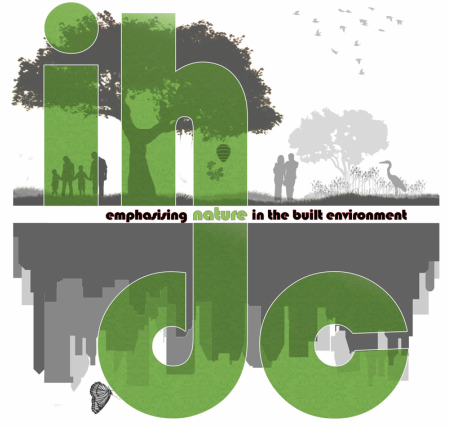Inspired by a competition (Integrating Habitats) from the city of Portland in 2007, a similar competition was organized in the UK in 2010 by livingroofs.org and RESET. The Integrated Habitats Design Competition (IHDC) also coincided with the International Year of Biodiversity. Open to everyone, the “focus of this competition is to ensure that working with nature, adapting to climate change and enhancing biodiversity is integral to the design of new urban, suburban and rural built developments. We hope that the IHDC will provide a forum for visionaries and innovators to design better, more sustainable habitats for all of us.” Entries were submitted from a wide range of disciplines including students, engineers, architects and landscape architects as well as collaborative projects.
The competition recognized that not only do we need to preserve and restore habitat in the countryside, but in the cities as well. Going even further, they sought to integrate habitat not only in parks and open spaces, but into the very fabric of the city, the built environment. The award ceremony took place in September during the World Green Roof Congress in London and an IHDC exhibition ran for over a month at The Building Centre, also in London.
The design criteria looked to judge the submissions on integration of the following elements (from the design brief):
- Ecosystem Services: Demonstrate design principles that highlight the benefits of ecosystem services in terms of climate change mitigation and adaptation
- Biodiversity: To enhance and improve habitats for species of importance relevant to the chosen site in terms of local, regional and national biodiversity action plan targets
- Water: Manage storm water run-off creatively and resourcefully
- Energy & Low-carbon: Using materials and design that deliver energy efficiency and show consideration for their impact when selecting them
- Livability: Designs that encourage amenities for increased health and connectivity and which foster a sense of community and diversity
- Economics: To create opportunities for economic value and affordability.
Initially I had planned to cover all eight of the winning designs in one post, but as I looked over them, I saw that each was very detailed and they all had very different ideas and approaches. There are many excellent ideas among the different designs. I think they each deserve their own post to focus on the multitude of ideas for each design. Another reason for multiple posts instead of one, is because designs like this are not very common yet and they really deserve attention. Hopefully there will be many more design competitions like this in the near future. Stay tuned for a profile of each of the eight winning designs which include:
- Edge Hill Halls (Overall Winner) by Maria-Cristina Banceanu
- Matripolis (Runner-up) by Paul Jones and David Dobereiner
- The Seed Catalogue (Highly Commended) by Susannah Hagan, Silvio Caputo, Mark Gaterell
- City Park (Shortlisted entry)
- Overflow Car Park (Shortlisted entry)
- National Wildflower Centre (Shortlisted entry)
- Satoyama (Shortlisted entry)
- Happy Habitats (Shortlisted entry)
More from the Integrated Habitats series:
- Integrated Habitats Design Competition 2010
- IHDC 2010:: The Seed Catalogue
- IHDC 2010:: Happy Habitats
- IHDC 2010:: Satoyama
- IHDC 2010:: National Wildflower Centre
- IHDC 2010:: Overflow Carpark
- IHDC 2010:: City Park
Further Reading::






